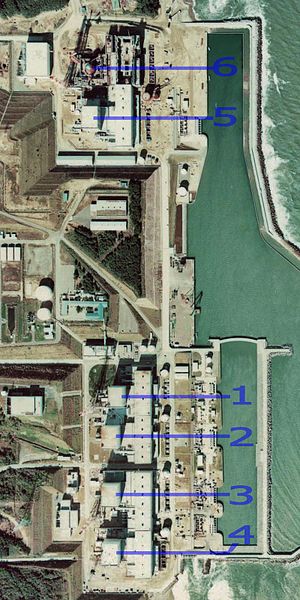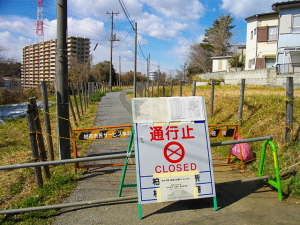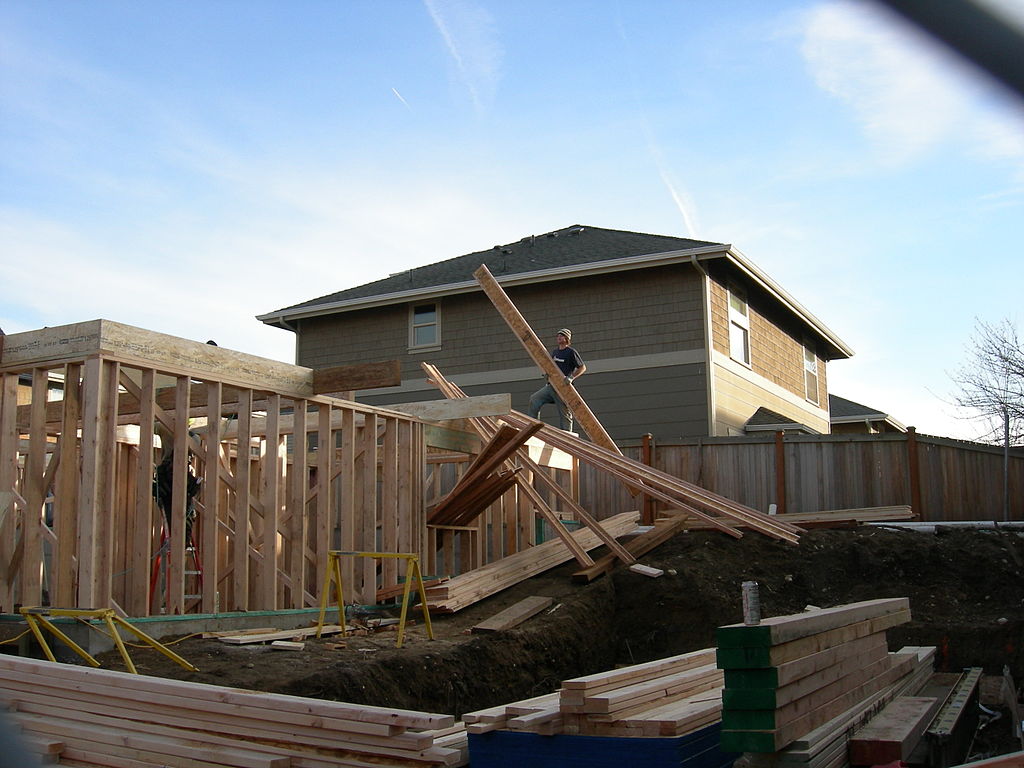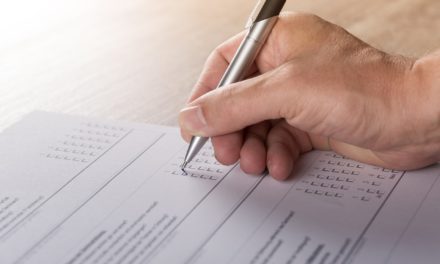It’s been more than 4 years since the devastating Great East Japan Earthquake struck and sent a tsunami crashing into the eastern coast of the country. Almost 16,000 people died, and another 2,572 were reported missing. The one-two punch collapsed or damaged more than one million buildings.

Fukushima Daiichi Nuclear Power Plant in 1975, made based on National Land Image Information (Color Aerial Photographs), © Ministry of Land, Infrastructure, Transport and Tourism of Japan
Perhaps the most noteworthy destruction caused by the magnitude 9.0 Tōhoku earthquake was the damage sustained by the six-reactor Fukushima Daiichi Nuclear Power Plant complex. The earthquake damaged the transmission system from the off-site power sources, and then floodwaters damaged the primary and backup on-site power systems used by all six reactors; only reactor 6 retained electrical power from one of its diesel generators. With the loss of the generators, the other reactors could not be cooled adequately. Three of the reactors experienced core meltdowns, and three experienced explosions. More than 100,000 residents were evacuated from the surrounding area because of radioactive material released into the environment, and some of them have not been able to return home yet. The event was classified as a major accident, Level 7 on the International Nuclear and Radiological Event (INES) Scale.
Crews worked to contain the radiation and repair the reactors. The meltdowns also brought scrutiny of the country’s other nuclear power plants and raised questions about their safety. By September 2013, all 43 of Japan’s operable nuclear reactors had been shut down for maintenance, upgrades, and to allow officials to ensure that they meet new safety guidelines.
Nuclear power has been an important part of Japan’s energy profile. The country does not have vast underground oil and gas reserves, nor does it have the room or locations for large amounts of solar or wind power. Before the March 2011 accident, nuclear energy equaled about 27% of Japan’s energy output, and was one of the country’s least expensive sources of power. Following the Fukushima Daiichi accident, the nuclear power usage declined sharply, bottoming out last year with zero nuclear energy output.
To replace the energy lost by nuclear plants being shut down, Japanese imports of natural gas and other fossil fuels have increased, and in fiscal year 2013, Japan relied on imported fossil fuels for 88% of its energy needs.
In the years since the Fukushima Daiichi accident, nuclear power has been a big topic in Japan. While investment in alternative energy sources has increased, Japan’s resources are extremely constrained. There’s no question Japan is facing a dilemma when it comes to energy: continue importing large amounts of fossil fuels, or increase energy independence by returning to a focus on nuclear energy. Following the 2-year shutdown, nuclear reactors are slowly coming back online.
The No. 1 reactor at the Sendai Nuclear Power Plant was the first to restart in mid-August, and the Sendai No. 2 reactor restarted on October 21. Three more reactors at two other plants have received Nuclear Regulation Authority (NRA) approval, but a court injunction has at least temporarily prevented restart of Takahama reactors 3 and 4.
However, following NRA assessments, it appears now that many of the reactors will not be restarted. Several legal injunctions have been filed to keep the reactors shut down, but scientists believe that nuclear energy will have less of an effect on the environment if it is properly regulated.
Today, Japan imports 84% of its energy. Officials are hopeful that clean energy could provide 24% of the country’s energy profile by 2030. Prime Minister Shinzo Abe wants nuclear energy to make up 22% of Japan’s electricity production by 2030. While that is lower than before the Fukushima Daiichi accident, it may still be an ambitious goal. The public has been fighting the restarting of reactors due to fears of another incident like Fukushima. Safety regulations are stricter now, and reactors are in the process of being approved. But how many attain approval will determine the way the entire country views its energy needs in the future.
Dr. Clifford Lipscomb, our director of economic research, spoke earlier this week at the 2015 United States Association for Energy Economics (USAEE)/International Association for Energy Economics (IAEE) North American Conference in Pittsburgh on these very topics. His talk centered on the relationship between U.S. shale gas development and how that relates to Japan’s need for natural gas. In fact, his chapter in a book on national issues relating to shale gas was written with the co-author of Japan’s strategic energy plan, which established the 2030 goal for nuclear energy being a significant portion of the country’s energy portfolio. The book chapter and resulting book are slated to be published in spring 2016. We will have more information on the book closer to publication.






Recent Comments